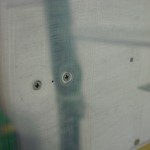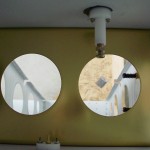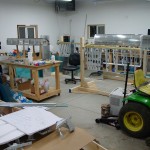AOA wing install
Hours: 2.1 | Posted in Accessories & ModsWith the leftover Proseal from the left tank, I decided to install the AOA wing components, since they need sealant between the fittings inside the wing and the skin of the leading edge, in which a #60 hole is drilled for the actual port. The install is fairly straightforward, as AFS provides measurements for properly locating the upper & lower ports. They are installed at the same chord location, but offset a few inches from each other spanwise. On the 9 wing, they end up behind the cutout for the leading edge lights, but the AFS guys indicate that’s no problem. In addition to the two ports, a small hole is drilled in the bottom skin so that a plunger can be inserted to actuate the quick-drain at the bottom of the upper port (allowing any water which may have entered via the upper port to be drained from the system).
Of course, nothing is ever as easy as it seems; the port fittings install with two countersunk screws, which can fit into a #30 dimple (though they’re not actually #30 screws, it seems). Drilling them was easy (remove the brass barb from the lower port fitting, and use it as a guide to mark the hole locations). However, having already installed the leading edge to the wing, dimpling those holes was proved interesting. There is no way to get a squeezer in there, as the end rib is in the way, plus the ports are 4.75 and 7.5 inches inboard from the skin edge. I experimented with various tools, assemblies of tools, and different ideas without success. I finally decided to do what is done on the rear spar: dimple, then “ream out” the dimple. I dimpled to #40 with the pop-rivet dimplers, then used a #30 countersink in a microstop cage, going one step at a time deeper until the screws sat just flush with the skin. Having already dimpled the skin prevented the countersink from having to remove too much material.
It may not be the perfect way to install these, but they’re in, and it’s what I had available. Word to the wise: figure out these locations when you have the assembly clecoed together for the first time, and dimple them with a C-frame type tool! Either that, or buy the #30 pop-rivet dimplers that I now see are available. I don’t know if these will be needed elsewhere on the plane, but I may toss in a set with my next order of something, just to have around in case. It’s a solution in need of a problem just like the one I had tonight.
After all that, I even found time to tidy up the shop and put away the various tools that have been laying around.




